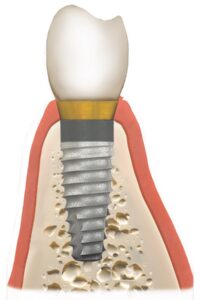Following an extraction, if one is not a candidate for an immediate implant or the bone isn’t strong enough to accept a dental implant, a procedure known as socket preservation or alveolar ridge preservation procedure is done. This is done to reduce bone loss after tooth extraction. Following the loss of a tooth, the jaw bone will undergo resorption resulting in 30–70% loss in bone volume and width in the first six months. Bone loss can compromise the ability to place a dental implant as well is is aesthetically unpleasing and reduces functional ability.
There have been multiple studies that have found that placing a bone graft at the time of the extraction or within a few weeks of the extraction reduces the amount of bone that is lost, allowing for the placement of a future dental implant in quality bone. Different materials such as Membranes (filters), bone grafts or tissue-stimulating proteins including your own found in your blood using PRF (Platelet Rich Fibrin) are used to stimulate your body’s own natural ability to regenerate the bone and gum tissue. The bone is then allowed to heal for 3 to 4 months prior to dental implant placement.


